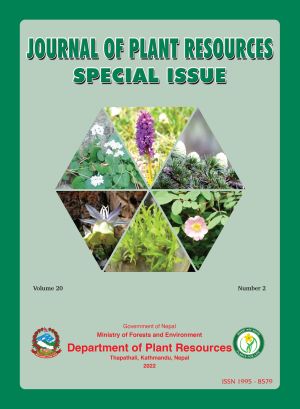Nanoprecipitation Based Preparation and Physicochemical Characterization of Flavonoid Nanoparticles
DOI:
https://doi.org/10.3126/bdpr.v20i2.57028Keywords:
Chrysin, Carrier, Nanoparticles, Nanoprecipitation technique, PolymerAbstract
Out of different secondary metabolites, flavonoids attract the attention of researchers due to their pharmacological potential and health benefits. But solubility and bioavailability issues severely restrict their use. Development of nanoformulation of flavonoids is one of the solutions to overcome these issues. The purpose of this study was to develop and characterize chrysin (CHR) loaded nanoparticles (CHRNs) by nanoprecipitation technique with Eudragit® and polyvinyl alcohol (PVA) as carriers. Particle size, polydispersity index (PDI), zeta potential, scanning electron microscopy (SEM), Fourier-transform infrared spectroscopy (FTIR) and X-ray powder diffraction (XRPD) was used to characterize the prepared CHRNs. The present study shows that CHRNs can be fabricated by a nanoprecipitation technique using the optimum weight ratio of CHR: Eudragit: PVA (1: 5: 5). The particle size, PDI, and zeta potential were found to be 238.1 nm, 0.434 and -20.1 mV. According to FTIR, CHR developed intermolecular hydrogen bonds with polymers (carriers). SEM imaging confirmed roughly spherical type particles with size of 100–400 nm. The results from the XRPD of the CHRNs showed that the crystal of the drug might be converted to an amorphous state. The release of the drug from the CHRNs was 85.54% compared with the pure drug at 45.11%.




